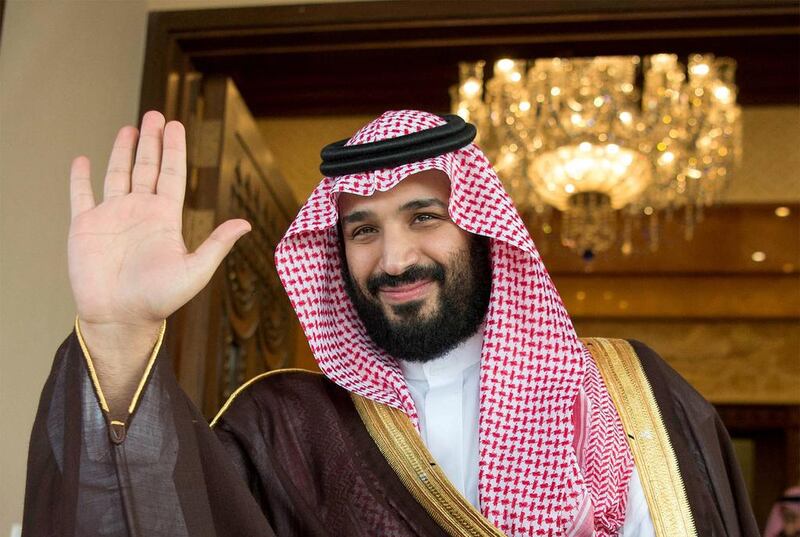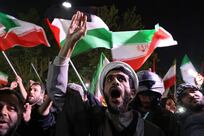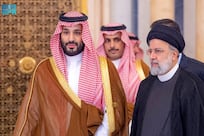For decades, the speed of Saudi foreign policy did not match the kingdom’s political and religious weight in the Middle East. As a result, the country’s influence remained limited relative to a more assertive and active Iran. Riyadh’s domestic and regional policies were further slowed down by an aversion to change from within some sectors of Saudi society. This is now changing in notable ways, and the impact of the transformation might take years for people to fully grasp.
The appointment of Mohammad bin Salman as crown prince goes beyond the defining promotion of an ambitious prince. It also comes amid a change more than half a decade in the making, affected by the upheavals in the region since 2011 and the changed politics of Washington under both Barack Obama and Donald Trump. The old Saudi Arabia was slow and reactionary; the new one is increasingly dynamic.
The most critical change is arguably a nebulous one, and related to domestic and foreign policies. Specifically, there is a growing tendency for policy assertiveness in the face of regressive voices that often push back against reforms. As one Arab official close to Saudi Arabia said, it should not be surprising that Riyadh will finally issue a decision to allow women to drive despite social and clerical resistance.
The dynamics of the new decision-making in the kingdom played out during the continuing diplomatic row with Qatar. While Saudis often took differing positions towards most regional events in recent years, a consensus prevailed in the context of the Gulf diplomatic crisis. This is not surprising. Indeed, many in Qatar and elsewhere thought Riyadh would be too reluctant to frame its dispute against Doha in the language of hostility towards Islamism.
The systematic criticism of highly revered clerics and the banning of the writings of mainstream religious figures such as Yusuf Al Qaradawi were unheard of. Also, Saudi clerics who often took an ambiguous stance against regional events, including the rise of ISIL, were quick to express support for the unprecedented measures against Doha. As the Arab official put it: “If in six months Saudi Arabia decides to lift the ban on women driving, will the clerics make a big deal out of it? They won’t.”
Such consensus might seem insignificant or natural for outsiders, but it speaks of a nascent transformation that presents opportunities for changes inconceivable a decade ago. It also follows at least a decade of a Saudi foreign policy that views Islamist extremism as a danger. The key difference is that the new Saudi Arabia is increasingly more willing to take proactive measures to challenge this threat, domestically and abroad. Regardless of one’s position towards the kingdom, this trend could be the most valuable opportunity for change in four decades, since the rise of both Sunni and Shia extremism. This opportunity affects Saudi Arabia, the region and the world, and nobody can afford missing it.
Washington’s withdrawal from the region under Mr Obama and its resurgence under Mr Trump could contribute to the changes in Saudi Arabia. The withdrawal compelled Riyadh to take a more active role in the region, and the resurgence could prop up an already active regional policy. If the relationship between Riyadh and Washington continues, the impact of such changes will probably be felt in Libya, Yemen and Syria in the coming months. The two countries have been in unreported discussions to jointly push for ambitious policies that seek to settle conflicts in several countries.
In the new Saudi Arabia, bold and dynamic policies inside and outside it will probably strengthen its role in the Middle East in the coming years. An Emirati analyst once described Saudi foreign policy as a heavy diesel vehicle; it might take time to pick up sped, but once it is moving it is more effective.
Today, Saudi policymakers are more and more engaged in the region. New alliances are being formed at a time of considerable upheavals. These alliances, as I wrote last month, are not limited to the cliched rivalry between Saudi Arabia and Iran or Sunni-Shia tensions. Instead, the most critical rivalry is between two visions – one supportive of Islamism and the other opposed to it. The outcome of regional upheavals since 2011 will be decided by one of these alliances, which in turn will shape the Middle East for generations to come.
Observers might view the new Saudi foreign policy through the lens of confrontation with Iran, and will warn about the risks of escalation in the region. Such warnings are legitimate, but they are simplistic and myopic. The changes in the way Saudi Arabia conducts itself, domestically and abroad, will be transformative. And the world can ignore the changes at its own peril.
Hassan Hassan is a senior fellow at the Tahrir Institute for Middle East Policy and co-author of ISIS: Inside the Army of Terror. Follow him on Twitter: @hxhassan.





